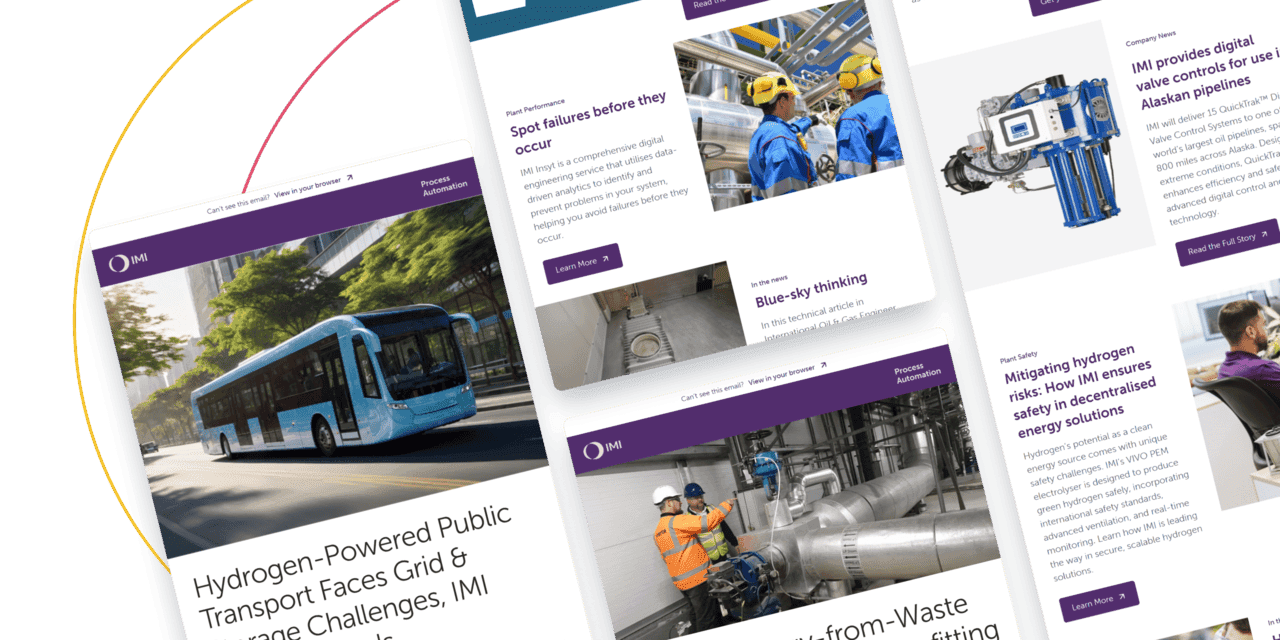
BLOG
Optimising plant performance in the age of irregular cycling

Written By IMI Publications
December 12, 2023
Located in Belvedere, Kent, Riverside 1 is one of the UK’s largest energy-from-waste sites. Owned and operated by Cory Group, the Riverside 1 site processes waste from the London boroughs of Wandsworth, Battersea, Tower Hamlets, the City of London, and Barking. It uses barges, tugs, and the River Thames to offload around 850,000 tonnes of non-recyclable ‘black bag’ refuse annually.
Not only does Riverside 1 provide power, but it also diverts a significant amount of waste that would otherwise be disposed of elsewhere, meaning that 239,836 tonnes of carbon are saved annually by not sending waste to landfill sites. An important byproduct of the incineration process is steam, which drives a turbine/generator set that generates > 476 GWh of partly renewable baseload electricity, which is enough to power 195,000 homes or a city the size of Norwich.
Riverside 1 is also notable as one of the first European facilities to benefit from Inyst, IMI’s prescriptive engineering service. Having already impacted North America, our Insyt team recently visited this customer site to learn more about the outcome of the in-depth study.
Making effective use of data
Insyt allows site managers to identify and correct system safety and operational issues. As a consultancy service, it avoids the use of invasive technology and instead examines a site’s latent operating data.
IMI’s engineers examine this data using specialist software that reveals markers or trends indicating issues within a site’s equipment and controls. These results are then presented to the customer with recommended interventions.
This capability was introduced to Alan Neeson, Riverside 1’s Assistant Operations Manager by IMI’s UK and Ireland Business Partner GPEC Ltd. Alan and his team had been experiencing ongoing issues with water hammer, a damaging phenomenon commonly found in today’s power plants. At the plant, water hammer was negatively impacting electricity production and causing Cory Group revenue loss due to drains remaining open for extended periods. This affected plant efficiency and meant that Riverside 1 could not meet its electricity export targets.
Water hammer has several root causes. Some are due to design, while others result from how the plant is run. It is especially serious in steam systems within power plants where high-pressure steam is used for critical operations such as driving turbines or heating processes. When water hammer occurs in such systems, it can have severe consequences due to the high energy carried by the steam and any entrained water.
Steam systems operate at high pressure, and any sudden changes in flow or pressure can create very powerful shockwaves. This is because entrained condensate travelling with the speed of the steam generates pressure surges and can lead to equipment damage, downtime, system instability and safety hazards.
Following discussions with engineering consultants GPEC Ltd. Cory Group commissioned IMI to investigate the problem, recognising the need to act quickly. They suspected that repetitive water hammer issues on Riverside 1’s high-pressure to low-pressure pressure-reducing station might have been caused by a potential error or malfunction within the associated drainage system.
To minimise the chances of further damage, the drain valves were left open indefinitely. While this solved the water hammer issue, it was not ideal as useful steam was lost in the drain rather than being redirected to the turbine for electricity generation.
Identifying the root causes
Armed with this information, IMI conducted a thorough physics-based analysis of the site’s drainage system, valve operation and plant logic.
This one-year analysis confirmed the Riverside 1 team’s suspicions. The report demonstrated that the system was characterised by excessive flow velocities combined with sudden changes in pressures and temperatures. This created significant quantities of condensate because the system bypass station was always in standby mode, meaning that the upstream piping system was cooling down. Therefore, when the process station came into service, the hot steam passed through the cold system, creating excessive quantities of condensate.
Second, the shut-off valve upstream created pressure shocks, while thermal shocks resulted from hot steam entering the cold system. Once the Insyt team identified these three contributing factors, they devised an effective solution.
Small interventions, big impacts
IMI’s recommendations were relatively minor in the context of the wider facility, but they have had an outsized impact on performance.
A pre-heating system was proposed to manage Riverside’s water hammer issue and prevent condensate formation during standby mode. Bypassing the control valve is the easiest and most common way to preheat upstream piping.
IMI also recommended keeping the high-pressure/low-pressure bypass system (HPLP-SOV) permanently open and closing it only in the event of emergencies. This change would eliminate rapid pressure and temperature changes and the preheating procedure above.
Another outcome of the study was the optimisation of steam temperature control and injection, ensuring improved steam quality in combination with enhanced process stability.
Redefined efficiency in power
Alan’s team implemented the recommended changes in April 2024. The outcome has been nothing short of outstanding, with the water hammer issue eliminated.
Riverside 1’s net efficiency improved by 1.5%, and the site’s electricity export per ton of waste improved by 0.45 MWs. Electricity generation at the site improved by 4-6 MWs/h while the total cost of the changes, including the study itself, was paid back within a month. Cory Group generated approximately a further 30,000 MWhs of electricity across Q2, Q3 and Q4 of 2024 while improving operating efficiencies and ensuring that annual targets were achieved. Since the successful implementation of the Insyt findings, Alan and his team have noted:
No further water hammer events
Improved control
No further damage
Equipment stability and reliability
Reduced losses
Improved efficiency.
Eliminating the water hammer issues allowed the generator to reach its maximum designed electrical output, which it had not achieved for years before the study. Inyst learnings are also influencing the design of Riverside 2, which is currently being built next to the original site.
As Alan Neeson notes, ‘GPEC and IMI consistently demonstrated a helpful and collaborative approach, fostering a strong working relationship. GPEC and IMI proved to be reliable partners whenever challenges arose, always ready to provide insightful solutions and support. Their proactive and responsive attitude has undoubtedly played a pivotal role in the smooth execution of our collaborative ventures.’
However, Insyt is not just about the balance sheet; it also gives site teams the evidence they need to make significant changes with the support of IMI’s expert engineers. This is a frequently overlooked issue within power generation, with some organisations now struggling to recruit staff who can effectively diagnose flow control issues. In other words, it’s a critical resource for industry today.
(Header image courtesy of Cory Group)
Keep in touch
Stay up to date on all the latest news and articles from IMI.

Keep in touch
Stay up to date on all the latest news and articles from IMI.


Keep in touch
Stay up to date on all the latest news and articles from IMI.
Engineering the future together
Looking for the perfect flow control solution? Our experts specialise in providing tailored solutions to meet your unique needs. Let us help you achieve optimal performance, efficiency and safety.